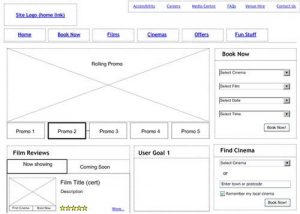The surge. The wave. The apex. The spike. The spread.
These terms and expressions have become part of the vernacular describing the COVID-19 pandemic. A foreboding and ominous context. Our country is entering the third significant reckoning of the pandemic. More widespread than at any time. Yet, it is a time to hang onto the hope of promising news on the development of high efficacy vaccines.
In the midst of these wild swings from despair to hope, people’s lives are dramatically changing. Family life, social life, business life, and work-life have all been affected. No area of everyday living has been left untouched. And a multitude of industries and markets drastically affected.
Without question, your buyer’s lives have changed. Their goals, challenges, situations, perspectives, and more have changed. Some changes minor while others significantly altering. Some short-term while others will be part of the recovery and beyond.
We have already seen acceleration towards digital trends in both consumer and B2B markets. From eCommerce proliferating in many consumer markets to digital commerce in complex B2B becoming more acceptable. Most certainly other trends will evolve as a result of the COVID-19 pandemic experience.
For many B2B organizations, recovery and rebound are rooted in how well they know how their buyers have changed. And, where they are heading into the future.
More Research. Not Less.
What we are seeing is buyer goals, challenges, psychology, behaviors, and situations are undergoing rapid shifts. Despite this accepted notion that shifts are happening, there is the usual impulse by businesses to cut back on any planned research.
This is exactly the time to conduct buyer research. When buyers are going through their most dramatic changes ever. And it is important to do the right form of buyer research. While some changes are related to obvious activity-based behaviors, such as more use of video and digital, others will not be so obvious. It is the not-so-obvious insights that make the difference.
Here is where more buyer research and gainful not-so-obvious buyer insights can make the difference in recovery and rebound in 2021:
Goals
Are your buyers’ goals changing? Have new goals replaced previously accepted goals? Do you know how goals are relevant to buyers? For instance, one manufacturer we worked with had a stated goal of expanding two logistic facilities. Now shelved until 2022. This affected further goals downstream.
Challenges
What new challenges do your buyers face? How do they hinder progress? An obvious example is how the event and conference industries were confronted early on with the sudden challenge of no in-person events. Proliferating now is digital virtual events. What are the not-so-obvious challenges?
Psychology
How has your buyer’s thinking changed? What new or altered perceptions permeate their decision-making? This is where solid qualitative buyer research can help organizations understand how buyer psyches have changed.
Behaviors
How have activity behaviors changed? What are the new unanticipated behaviors? In a previous article, we uncovered a buyer insight that more research was being conducted by buyers seeking in-depth evaluations. We have also highlighted recently why Buyer Interactions Design (BxD) is becoming more important.
Situations
How have your buyers’ situations changed? How are situations presenting new problems and challenges? What new environments and stakeholders are now represented? Take the recent announcements regarding forthcoming vaccines. There are significant logistical challenges and situations yet to be resolved. Refrigeration and distribution to name two.
Buyer Research Leads To Buyer Insights That Guides Recovery And Rebound
Qualitative buyer research is the gateway to deep buyer insights about new goals, behaviors, and decisions your buyers are facing. Many not-so-obvious on the surface. Providing a deeper understanding of how and why your buyers are changing due to the COVID-19 pandemic.
Having profound and deep buyer insights will lead to:
- A reset of your overall buyer strategy that adapts to buyer changes
- Researched-back buyer personas that provide a common view of buyers
- Messaging that speaks with empathy towards buyers
- Demand generation that gets to the heart of the matter quickly
- A content strategy that meshes well with what buyers seek
- Enablement strategy that positions sales as enablers
- Loyalty from buyers who know you have been alongside them
- Recovery and rebound that leads to revenue growth
Buyers are changing rapidly as a result of the pandemic. In many not-so-obvious ways. As we endure more months, perhaps some more arduous than at the beginning of the pandemic, we will see even more shifts.
This is the time to get to know your buyers more deeply than ever. With the right kind of buyer research that gets you the right kind of not-so-obvious buyer insights. Insights that provide you with the resiliency needed to build a successful path towards recovery and rebound.
Business & Finance Articles on Business 2 Community
(15)
Report Post






